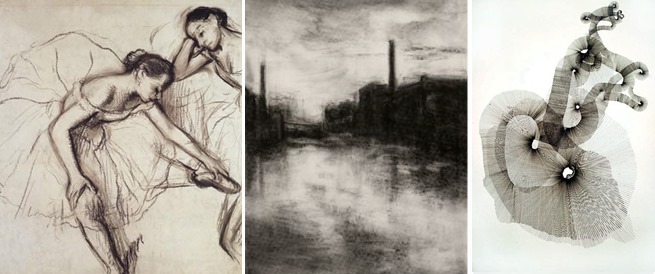Though never in the forefront of the visual arts world, drawings have been a steady favourite from the time humans first made linear marks on cave walls.
As simple as this art form is, it still manages to evade strict definitions. Basically, a drawing constitutes of marks left on a surface (usually paper) by a variety of media such as graphite pencil, charcoal, ink, chalk, and so on.
Traditionally, drawings are said to be monochromatic representations of a subject rendered primarily with lines. Paintings, on the other hand, deal with mass and colour.However, rules (especially in art) are meant to be broken, so we have drawings where pencil, charcoal marks, or ink washes cover broad fields. We also have variegated drawings, executed with coloured pencils or wax crayons.

Often, drawings are quick sketches (visual notes to which the artist may add descriptive words), studies for the final artwork (of a model’s left leg, for example), or a preparation for the painting (destined to be covered with oil or acrylic paints).
Drawings, however, can be and nowadays often are an end to themselves. That is what happens when artists set out to make a drawing as a finished piece of art, with the best of them creating works of unparalleled spontaneity and immediacy.
Drawings can be executed in a variety of techniques:

Line drawing technique refers to visual representations rendered mainly or only with lines, which may vary in thickness. With their crispness and immediacy, line drawings can have great appeal whether done with pencil, ink or charcoal.
Shading techniques can be used to give the drawingstonal values and textures. Some of the most popular shading techniques include rubbing (usually graphite or charcoal), hatching and cross-hatching (drawing parallel or criss-crossed lines), stippling (covering areas with dots of varying density), scumbling (making small scribbles), applying ink washes, and so on.
Subtractive technique involves covering large areas of paper with graphite or charcoal marks and then “subtracting” the medium with an eraser, thus creating an image that usually appears as a negative.
Now that you’ve delved into the intricacies of this branch of visual arts, browse and buy:
- Drawings directory from the artist;
- Original drawings by South African artists; and
- Drawings by international artists.










